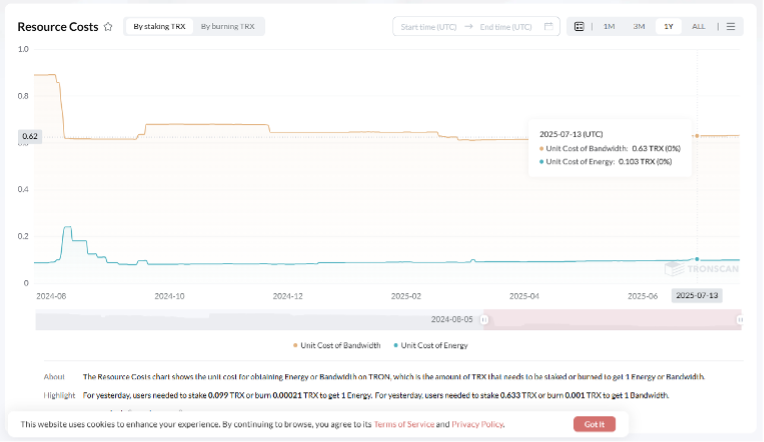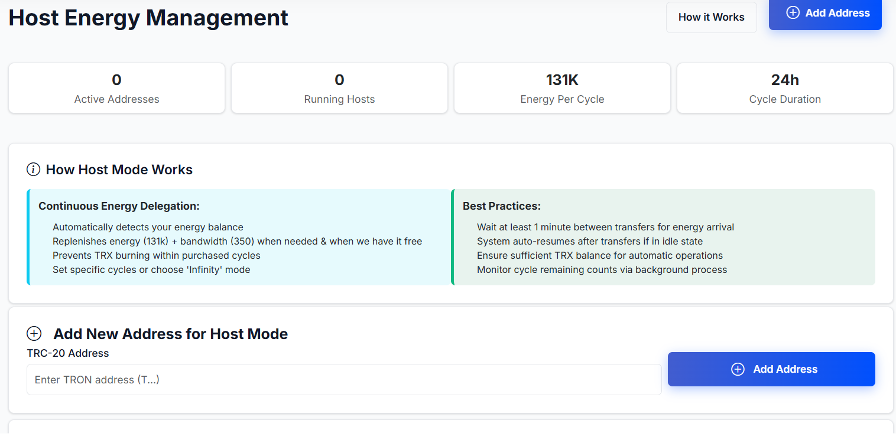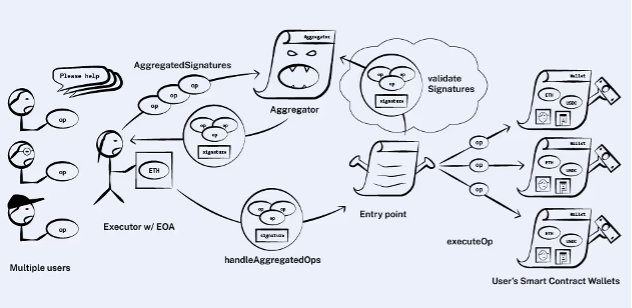The TRON network, a leading player in the blockchain world known for its high throughput, low fees and rich ecosystem. This is more relevant than ever as we carry on into 2025 — especially for developers, businesses, or power users who need to make use of its speed for project work. But as the size of these jobs increase, human intervention is a bottle neck — expensive, time-consuming and error-prone. It's not just about using TRON — mastering it through automation is the future!
The state of TRON automation — August 4th, 2025 We will go deep into the key mechanics of network that support all operations, we'll cover automation from simple transfers to complex API driven workflows and introduce suite of tools so you could set your TRON activities on autopilot.
Bedrock of Automation: TRON's Architecture in 2025
Knowing that, we need to understand from which series the automation is being derived. However, TRON is capable of such fast transaction due to its consensus mechanism Delegated Proof-of-Stake (DPoS) mining protocol. Typical Proof-of-Work systems force a broad network of miners to compete against one another in solving complex computational problems, while DPoS functions more as an e-republic.
TRX holders have to vote for 27 Super Representatives (SRs) who run the nodes that produce blocks and validate transactions. This tiny, online group can achieve consensus much faster than a decentralized network of thousands. This is how TRON can deliver these 3 second block times and 2,000 transactions per second that it so boasts about. This high exact throughput is probably really good for an automated network because you dont need to worry if your TRX stuck or get charged a lot during peak congestion. Among SRs (and an even larger group of Super Representative Partners, the candidates to become SR), these entities are incented with block rewards for providing core functions to the network.
Main Resources of the System
You need to know what you are managing before you can automate it. On the TRON network, Bandwidth and Energy are important resources for operational efficiency. TRON's model also differs in that there is no fluctuating gas fee structure, unlike other networks.
- Bandwidth: Bandwidth is the fuel for simple operations. Triggers to send TRX or TRC-10 tokens mostly use Bandwidth points. A daily allowance of about 600 Bandwidth points — enough for a few regular transactions — is provided free to each account. As soon as the reserve is gone, a fraction of TRX will be burned to pay for it.
- Energy: This resource is necessary for all more complex operations, especially the execution of smart contracts. This is the fundamental piece used for TRC-20 token transfers including the ever-present USDT, dApps interaction or deploying your contracts. For easy understanding, a normal transfer like USDT transfers can take between 85 and 95k Energy to complete. When you run out of Energy, the network will burn TRX to support your account in completing your transaction anyway but this can be costly as it is much cheaper on dedicated Energy supply. The network also uses what is called a dynamic Energy model, that can alter the amount of Energy different operations cost to prevent low-value spam transactions and act as networks stabilizer.

When you burn TRX to supply Energy, it is economically more beneficial than burning TRX (0.1) OR simply using a staked or rented Energy bear in mind the high CHAIN Energy cost vs efficiency of putting your own locked up one bearing this in mind, such economic calculation is the main reason for Tron Energy rental market. Any user that uses smart contracts regularly has a key to cost reduction in the first place which is securing sources of Energy.
Automation Spectrum — Simple Scripts to Intelligent Agents
TRON Automation isn't a single concept, but is a range of ideas that scale from simple scheduled tasks to complex systems designed to respond and manage assets & resources in real-time using logic rules.
Level 1: Scheduled Transactions
The easiest automation form. An archetypical case would be a business that automates its USDT payroll on a monthly basis. A script can be written to:
- In the following steps, read a list of employee addresses and payment amounts from a database or a simple file.
- Generate a TRC-20 transfers transaction for each employee
- Sign transactions using a private key stored securely.
- Send it to the TRON network through an API endpoint.
A very simple workflow that protected hours of manual work and the occasional copy-paste error.
Level 2: Resource-Aware Automation
Level 1: The script is cost-blind A better script would involve management of resources. This is because before broadcasting the payroll transactions, it would first verify that sufficient Energy is available on the account. If the Energy is not enough for the batch of payments, the script would connect to one of multiple Tron Energy rental services instead (to save burning expensive TRX by default). which would then sum total Energy to calculate, executing an API for rent Energy on Tron blockchain and waiting until the rental confirm before broadcasting the transfers.
Pseudo-code example:
function processPayroll(payrollData): totalEnergyNeeded = calculateEnergyFor(payrollData) currentEnergy = getAccountEnergy(myAddress) if currentEnergy >> Continue signing and broadcasting the transactions broadcastTransactions(payrollData)
Level 3: Data-Driven Actions
Such a level of automaton needs to listen changes in the blockchain and run actions based on received data. For example, a simple arbitrage bot may continuously track the prices of a specific pair of tokens on TRON across multiple DEXs. It immediately forays into buying and selling transactions to take advantage of discrepancies in prices. This amount of high-frequency operation would be impossible to do manually.
Level 4: API-Driven Workflows
Advanced automation will have TRON operations become part of the wider execution through business workflows. As an example, in case we have an e-commerce platform, in the same then when a physical product is shipped to a customer (event that typically is send via webhook), we could ask for this delivery event triggers something on the cloud-function side.
Best practices for Securing your Automated Kingdom
With great power comes great responsibility. It should be noted that an automated system controlling funds is a prime target for attackers. Securing your automation is not "optional"—it is paramount: know the best practices. Technicalities which include, API Key Security. API Key should never be hardcoded directly in your scripts. Instead, use environment variables, or better yet, employ a secure secret management service. Always enable IP whitelisting for your keys; they can only be used from your server's static IP address.
Managing your Private Key. The private key is the transactional authority. It should never be stored in plaintext. For enterprise-grade applications, use a Hardware Security Module or employ a trusted Key Management Service that signs transactions for you without ever revealing the key itself.
Validation before Broadcast. Your script should perform basic sanity checks before broadcasting. Is the transfer amount sane? Is the recipient address a valid address? These checks help you avoid costly mistakes.
Monitoring & Alerts. Don't ever "set and forget". Your system should come with robust logging and alerts to your email, Slack, or Telegram. Any part of the process failing - be it an Energy rental, a transaction broadcast, or an unexpected API error should alert you.
Solution Spotlight: Netts.io Workspace
While direct API interaction provides flexible automation capabilities, it also requires immense development force and security infrastructure management experience. Integrated platforms, such as Netts.io Workspace, provide value to users by democratizing professional-grade automation. Netts.io Workspace is a professional toolset designed to bring professional-grade automation capabilities to users of any level. The software deals with resource management and security to integrate intelligent Energy distribution solutions.

Smart Mode
So far, the bread & butter of its automation. Customers can set up their own addresses for monitoring. Smart Mode is automatically engaged whenever you are sending TRX with a detectable balance right when your Energy happens to be low — at which point the exact amount of Energy required is rented just in time. Custom Working hours and timezones are supported so it only automates in your active hours.
Host Mode
Host Mode offers constant Energy for destinations with strong, high-frequency transaction base. It assigns a 24-hour automatic renewal of a 131,000 Energy and 400 Bandwidth package, thus ensuring this address will never be out of power.
Auto Management
This dashboard manages all auto-renewal services. You can have ten addresses in Smart Mode or five in Host Mode, but all are managed from a single control panel.
Create Your Autoempire
Netts.io ecosystem makes it easy to manage deposits and withdrawals, offers a full transaction history that can be filtered and exported. The professional API access is also a game changer for developers. The API offers both a Standard key and a Telegram API key, both secured behind IP whitelisting that will help developers to integrate with Netts. s powerful automation functionality directly in their own applications.
It is a living platform with updates always on the horizon like Token Swap, direct USDT Transfers w/ integrated Energy optimization and next level trading schemes like Gemini's discretionary orders.
After choosing Netts.io as your main ecosystem you get:
- Secure — enterprise security at REST & in transit, MFA + IP whitelisting, auditable trail.
- Maximum Efficiency - reduce up to 80% of the transaction costs against burning TRX.
- 24x7 Automation - set your rules once and never worry about it.
The Human Element: TRON and Account Abstraction
When looking towards the end of 2025 and beyond, we can say that the protocol will bring about a monumental change to automations: Account Abstraction.
Today, users contain just public/private key pairs (called Externally Owned Accounts or EOAs). But account abstraction makes every user account act as smart contract itself.
Flexible Security. Instead of a single private key, an account could require multiple signatures to authorize the transaction or even a signature from a trusted third party.
Gasless Transactions. Accounts can be set up to pay for transaction fees with TRC-20 tokens instead of having to hold enough TRX in them, or simply let another account sponsor their Energy costs completely.
Instant Wallet Setup. Let users create a wallet through social login (Google, Telegram) or passkey and handle the underlying cryptographic key management under the hood.

Account abstraction is an automation quantum leap. This will allow to build a much more secure and user-friendly automated systems. For instance, a business might want to set up a payroll wallet that only allows payments above a certain threshold be processed programmatically and only with the signatures of both the CEO and CFO. A dApp could pay for the Energy of your first ten transactions, creating a seamless carpet intro to new users.
Conclusion
By this time, the TRON network in 2025 represents a mammoth of efficiency and capable. For gripping, though — that's another level you need to go even further beyond natural touch to make it really work. Automation is the means to a scale ability previously unheard of, to cut operational costs significantly and drive forth the next generation of decentralized applications.
Whether you are a developer writing your own scripts, or a business layering on top of a professional toolset like Netts. Whether you are a dApp developer excited to write account abstraction, or a consumer chomping at the bit for streamlined account access via email tokens. The silent revolution has already commenced. Learn how to use the ins and outs of the network, how to use your tools effectively so you can take you TRON activities out of manual work and into an auto pilot station that is efficient, cost effective, self-sustaining and ready for whatever decentralized web future comes next.
